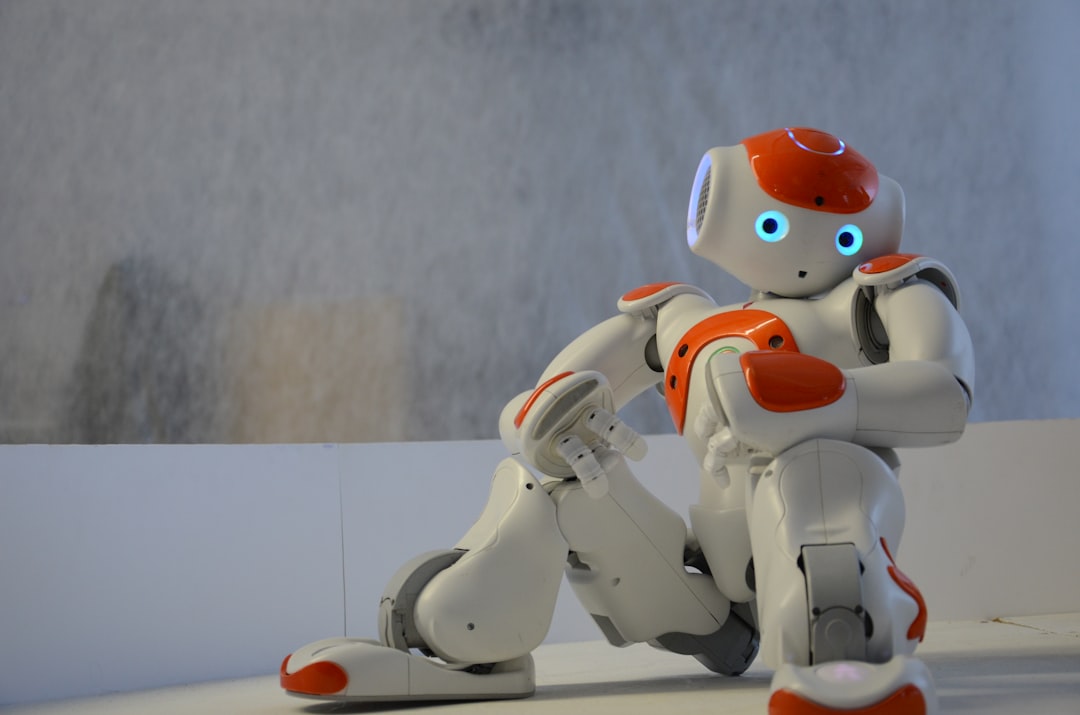The Evolution from Task-Specific Bots to Integrated Companions
For decades, the idea of a personal robot companion, a helpful and intelligent assistant whirring around our homes, has been a staple of science fiction. From Rosie the Robot in “The Jetsons” to the droids of “Star Wars,” we’ve dreamed of a future where technology serves us not just through a screen, but as a physical presence. For a long time, reality fell short. Early home robots were often limited to single, repetitive tasks, like the automated floor cleaners that heralded the first wave of Robotics Vacuum News. While useful, they were far from the intelligent, interactive companions we envisioned. However, a seismic shift is underway. Fueled by exponential advancements in artificial intelligence, computer vision, and sensor technology, a new generation of personal AI robots is emerging. These devices are not just tools; they are designed to be proactive, personalized members of the smart home ecosystem. They promise to understand context, anticipate needs, and interact with us and our environment in ways that were previously impossible. This article explores this exciting frontier, analyzing the technology, applications, and implications of the AI-powered personal robots that are finally beginning to roll out of the lab and into our living rooms.
From Single-Purpose to Multi-Modal
The journey of home robotics has been one of gradual evolution. The first successful consumer robots were defined by their singular purpose. Robotic vacuums learned to navigate a floor plan, but they couldn’t tell you the weather. Robotic lawnmowers kept the grass trim but were oblivious to the package delivery at the front door. The latest AI Personal Robots News highlights a fundamental change in this paradigm. The new wave of devices are multi-modal and multi-functional, designed to serve as a central hub for the connected home. They integrate the capabilities of many separate smart devices into one mobile entity. Imagine a device that is simultaneously a security camera, a smart speaker, a video projector, a pet monitor, and a smart home controller. This convergence is what sets them apart from their predecessors, moving them from a niche gadget to a potentially indispensable home assistant.
Key Technological Drivers
Several key technologies have converged to make this leap possible. First and foremost is the maturation of conversational AI. The latest AI Assistants News is dominated by the power of Large Language Models (LLMs), which allow for fluid, natural language conversations instead of rigid, pre-programmed commands. You can speak to these robots as you would a person, asking complex questions and giving nuanced instructions.
Secondly, advancements in computer vision are critical. The latest AI-enabled Cameras & Vision News showcases systems that can not only see but understand what they are seeing. These robots can recognize family members, differentiate between a pet and a dropped piece of clothing, and interpret human gestures. This spatial awareness is powered by a sophisticated suite of hardware, which is a major topic in AI Sensors & IoT News. By fusing data from cameras, LiDAR, infrared sensors, and microphones, these robots build a dynamic, real-time 3D map of their environment, allowing for safe and intelligent navigation through complex and ever-changing household landscapes.
Integrating an AI Robot into the Daily Routine
The true measure of a personal robot’s success is its seamless integration into the fabric of daily life. Its value isn’t in a single “killer app,” but in the cumulative effect of hundreds of small, helpful interactions throughout the day. Let’s walk through a hypothetical day with an advanced AI home companion to understand its practical applications.
The Proactive Morning Assistant
Your day might begin not with a jarring alarm, but with the robot silently entering your bedroom and projecting a gentle, simulated sunrise onto the ceiling, a perfect example of smart AI Lighting Gadgets News. Having already connected to your smart home network, it triggers your coffee maker to start brewing, a key feature highlighted in AI Kitchen Gadgets News. As you wake, it greets you with a personalized briefing, using its built-in speaker to share the weather forecast, your first calendar appointment, and overnight news headlines. This elevates the functionality seen in the AI Audio / Speakers News by making the information source mobile and context-aware.

The Connected Work-from-Home Partner
In the age of remote work, an AI companion can become an invaluable colleague. It can act as a mobile telepresence unit, following you from your desk to the kitchen so you can remain active in a video call without being tethered to a screen. This ties into emerging trends in AI Office Devices News. When a delivery arrives, the robot can identify the event, roll to the front door, and project the video feed from the doorbell camera onto the nearest wall, allowing you to see who is there without reaching for your phone. This proactive security function is a significant step forward in AI Security Gadgets News.
The Guardian and Entertainer
When you leave the house, the robot’s role shifts. It can enter a security patrol mode, autonomously navigating your home and alerting you to any unusual activity. For pet owners, this technology is a game-changer. The latest AI Pet Tech News discusses devices that can not only monitor pets but also interact with them, and a mobile robot is the ultimate expression of this. It can follow your dog to make sure it’s okay, toss a treat from a built-in dispenser, or use its projector to create a laser dot game to keep your cat entertained. For families with children, it can transform into an educational partner, a key area of development in AI Education Gadgets News, or an interactive playmate, blurring the lines with innovations from AI Toys & Entertainment Gadgets News.
The Evening Wellness Coach
As the day winds down, the AI companion can support wellness goals. It could guide you through a yoga routine, projecting a virtual instructor onto the floor and using its camera to offer feedback on your posture, a concept at the forefront of AI Fitness Devices News. Later, it can create a calming atmosphere for meditation with ambient sounds and soft, projected visuals. By learning your habits, it can offer gentle reminders for your evening routine, contributing to better sleep hygiene, a growing focus in AI Sleep / Wellness Gadgets News.
Under the Hood: The Complex Tech Stack Powering Personal Robots
The seemingly effortless interactions of an AI companion are the result of an incredibly complex convergence of hardware and software. Understanding this tech stack is key to appreciating both their capabilities and their limitations.
On-Device vs. Cloud Processing: The Rise of the Edge
A critical architectural decision in modern robotics is where to process data. Sending sensor data to the cloud for analysis offers immense computational power but introduces latency and privacy concerns. The emerging trend, as covered in AI Edge Devices News, is to perform as much processing as possible directly on the device. For a robot, this is non-negotiable. It needs to make split-second decisions to avoid obstacles or respond to a command. On-device processing, or edge AI, ensures this low-latency response and keeps sensitive data, like video feeds from inside your home, from ever leaving your local network. While futuristic concepts in Neural Interfaces News might one day offer direct brain-computer control, the immediate challenge is perfecting secure and efficient edge computation.
Embodied AI and Spatial Intelligence
A personal robot is the quintessential example of “Embodied AI”—an artificial intelligence that exists within a physical body and can interact with the world. This is what separates it from a smart speaker or a phone assistant. This physical presence requires sophisticated spatial intelligence. Using a technology called SLAM (Simultaneous Localization and Mapping), which is also fundamental to the advancements seen in Drones & AI News and Autonomous Vehicles News, the robot builds and continuously updates a detailed 3D map of your home. It learns the layout of rooms, identifies furniture, and remembers the location of obstacles. This allows it to plan efficient paths and navigate cluttered, real-world environments with grace and precision.

The Data and Personalization Engine
The “personal” in personal robot comes from its ability to learn and adapt to its specific users and environment. Over time, it collects data on your routines, preferences, and interactions. It learns which room you spend your mornings in, what time you typically leave for work, and your favorite music for cooking. This data is the fuel for its personalization engine. However, this also raises the most significant questions for consumers. The constant data collection by these mobile AI Monitoring Devices demands an unprecedented level of trust. Manufacturers must prioritize transparency about what data is collected, how it is used, and what security measures are in place to protect it. Secure, encrypted, on-device storage will be a key selling point for privacy-conscious consumers.
The Road Ahead: Challenges, Considerations, and Future Potential
While the latest prototypes and announcements are incredibly promising, the path to mass adoption is paved with significant challenges that must be addressed.
Overcoming Key Hurdles
First is the issue of cost. The sophisticated sensors, processors, and mechanical components required for these robots make them expensive. Early models will likely be premium products, and it may take several years for economies of scale to make them accessible to the average household.

Second is the challenge of utility versus hype. To avoid becoming a novelty gadget that ends up in a closet, these robots must provide tangible, consistent value. Their software must be reliable, their interactions seamless, and their capabilities must go beyond what can be achieved with existing, cheaper smart devices.
Third, and perhaps most important, are privacy and security. The idea of a mobile, internet-connected camera and microphone roaming one’s home is a legitimate concern. The industry must establish rigorous security standards and be transparent with consumers to build the necessary trust.
Finally, there is the limitation of physical dexterity. Most current companion robots are designed for navigation, observation, and projection. They lack the sophisticated arms and manipulators needed to perform physical tasks like picking up toys, loading a dishwasher, or folding laundry. Solving this mechanical engineering challenge is the next major frontier for personal robotics.
The Future Integration Landscape
Looking ahead, the potential is boundless. We can envision a future where these robots integrate with AR/VR AI Gadgets News, projecting interactive holograms that you can manipulate. They could be equipped with advanced sensors discussed in Health & BioAI Gadgets News to non-intrusively monitor the health of elderly residents, becoming a critical tool for independent living and a key device in the field of AI for Accessibility Devices. As the central hub for all Smart Home AI News, the robot could orchestrate everything from your Smart Appliances News to your indoor AI Gardening / Farming Gadgets News systems. It represents the ultimate user interface for the smart home—one that is not just intelligent, but also mobile, present, and truly personal.
Conclusion: A New Chapter in Human-Technology Interaction
We are standing at the threshold of a new era in consumer technology. The convergence of powerful AI, sophisticated sensors, and advanced robotics is finally bringing the long-held dream of a personal robot companion to life. The latest developments show a clear shift from single-task gadgets to multi-functional, proactive assistants that can see, hear, understand, and navigate our most personal spaces. While significant hurdles related to cost, practical utility, and privacy remain, the trajectory is clear. The question is no longer *if* we will have AI robots in our homes, but *when* and in what form. These intelligent companions are poised to redefine our relationship with technology, transforming our homes into more responsive, helpful, and connected environments. The ongoing stream of AI Research / Prototypes News confirms that this is not a fleeting trend, but the beginning of a new chapter in how we live and interact with the digital world.










